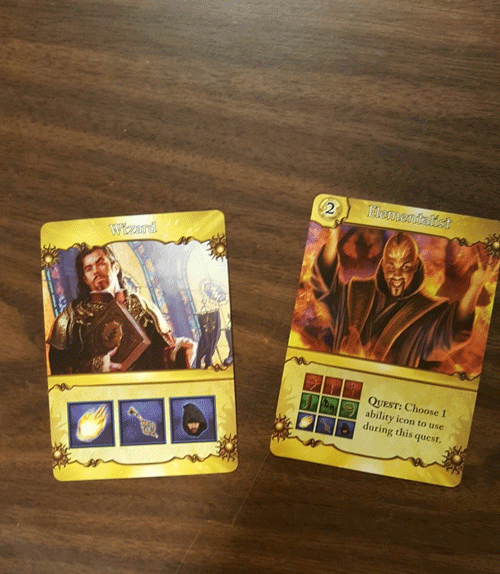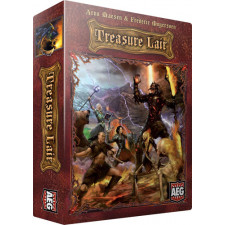Treasure Lair Review
on Dec 29, 2016
Since D&D and Magic Realm introduced the epic quest to gaming in the 1970s, designers worldwide have been working to replicate the thrill of adventure without the sacrifice of weekends. This reduction comes at a price, and various games have chopped out different aspects of the fun, focusing on what they believe to be the essence of the experience. Alderac Entertainment chose to preserve the entirety of it in macro scale by putting players into a more strategic role, managing a party of adventurers who attempt quests to gather treasure before their rivals do. Treasure Lair brings entertainment, variety and a high-level perspective of fantasy adventure to the tabletop, sort of like being the CEO of Gandalf and Co., Suppliers of Fine Fellowships.
Two to four players are in a race to amass a certain level of treasure by recruiting heroes with varying skills and sending them on a quest to defeat challenges and bring home treasure. Its tight gameplay is all in the cards, with quest challenges doubling as gold pieces by flipping them to their backside when completed, or drawn from the deck as gold and separate decks supplying characters, actions and treasure. Each treasure shows a reward and a difficulty, and challenge cards are stacked upon it until the number of different symbols on the treasure card is reached, building a quest in seconds.

What…is your favorite color?
The artwork on the cards is fantastic, which makes it a shame the gameplay focuses instead on the symbols below the title and image but the quests require the defeat of those symbols, so players collect heroes who can run the various gauntlets. I applaud Alderac for their challenge variety, allowing rogues and wizards to remain unique and contribute to the group in their own way instead of being forced to merely slay. The cast of heroes offers multiple options for quest completion, giving fantastical foremen leeway in their pursuit of treasure, but quest setup itself can be a detriment to the epic journey, simply by making every challenge visible in the default game mode, and the face-down final challenge surmountable via gameplay.
To eliminate a challenge, the player’s party must possess all symbols on the card. The player then claims the card, flipping it over to its gold piece backside, and continues down the line. Because all but one challenge is visible from the start, players spend their turns choosing one of three available action cards to amass a suitable fellowship, and then a gameplay rule allowing players to spend three gold to award one of their adventurers with any symbol virtually assures they’ll get past the face-down card right before the end of the rainbow. This may be the greatest knock on the base game; an optional rule allows a brief viewing of all quest cards before every one except the first is flipped face-down, and quickly becomes required for Treasure Lair’s continued excitement. Otherwise all the cards are on the table and all the suspense is gone, knocking the game into the realm of medieval management simulation and providing the greatest impediment to a suspenseful ending.

Choose, but choose wisely. Or pay 3 gold and choose whatever you want
There are a few ways to interact with your foes, but not nearly enough in a game where players can have full knowledge of what lies down the dark path, and some games can end with a player’s enemies unable to surmount the lead, despite having one last turn after the victory condition’s met. Corporate espionage isn’t a modern thing, and leaders from a long-forgotten age should be able to impede their rivals with more verve than Treasure Lair allows if the game’s taking a ten-thousand foot view of dungeon crawling. As is, the game feels like viziers gazing down at a fantastic realm, pulling strings where they can and leaving the rest to fate.
I should pull back, in case this sounds harsh. Treasure Lair is a fun, fast game, and while some leads can be surmounted, they can be avenged in rapid fashion thanks to the game’s quick setup and reloading of quests. Those seeking a dungeon delve that’s somewhat thematic and statically puzzling would do well to spend their time here, and will achieve much replayability and suspense by utilizing the optional “hidden challenge†rule. For its low price and small package, Treasure Lair offers big rewards for families and problem solvers alike.

 Customer Support
Customer Support  Subscribe
Subscribe 




 Account
Account  Wishlist
Wishlist 

